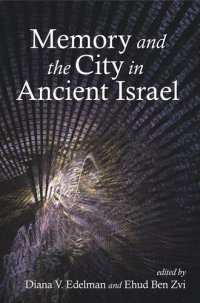
Ebook: Memory and the City in Ancient Israel
- Year: 2014
- Publisher: Penn State University Press
- Language: English
- pdf
Ancient cities served as the actual, worldly landscape populated by “material” sites of memory. Some of these sites were personal and others were directly and intentionally involved in the shaping of a collective social memory, such as palaces, temples, inscriptions, walls, and gates. Many cities were also sites of social memory in a very different way. Like Babylon, Nineveh, or Jerusalem, they served as ciphers that activated and communicated various mnemonic worlds as they integrated multiple images, remembered events, and provided a variety of meanings in diverse ancient communities.
Memory and the City in Ancient Israel contributes to the study of social memory in ancient Israel in the late Persian and early Hellenistic periods by exploring “the city,” both urban spaces and urban centers. It opens with a study that compares basic conceptualizing tendencies of cities in Mesopotamia with their counterparts in ancient Israel. Its essays then explore memories of gates, domestic spaces, threshing floors, palaces, city gardens and parks, natural and “domesticated” water in urban settings, cisterns, and wells. Finally, the studies turn to particular cities of memory in ancient Israel: Jerusalem, Samaria, Shechem, Mizpah, Tyre, Nineveh, and Babylon. The volume, which emerged from meetings of the European Association of Biblical Studies, includes the work of Stéphanie Anthonioz, Yairah Amit, Ehud Ben Zvi, KÃ¥re Berge, Diana Edelman, Hadi Ghantous, Anne Katrine Gudme, Philippe Guillaume, Russell Hobson, Steven W. Holloway, Francis Landy, Daniel Pioske, Ulrike Sals, Carla Sulzbach, Karolien Vermeulen, and Carey Walsh.